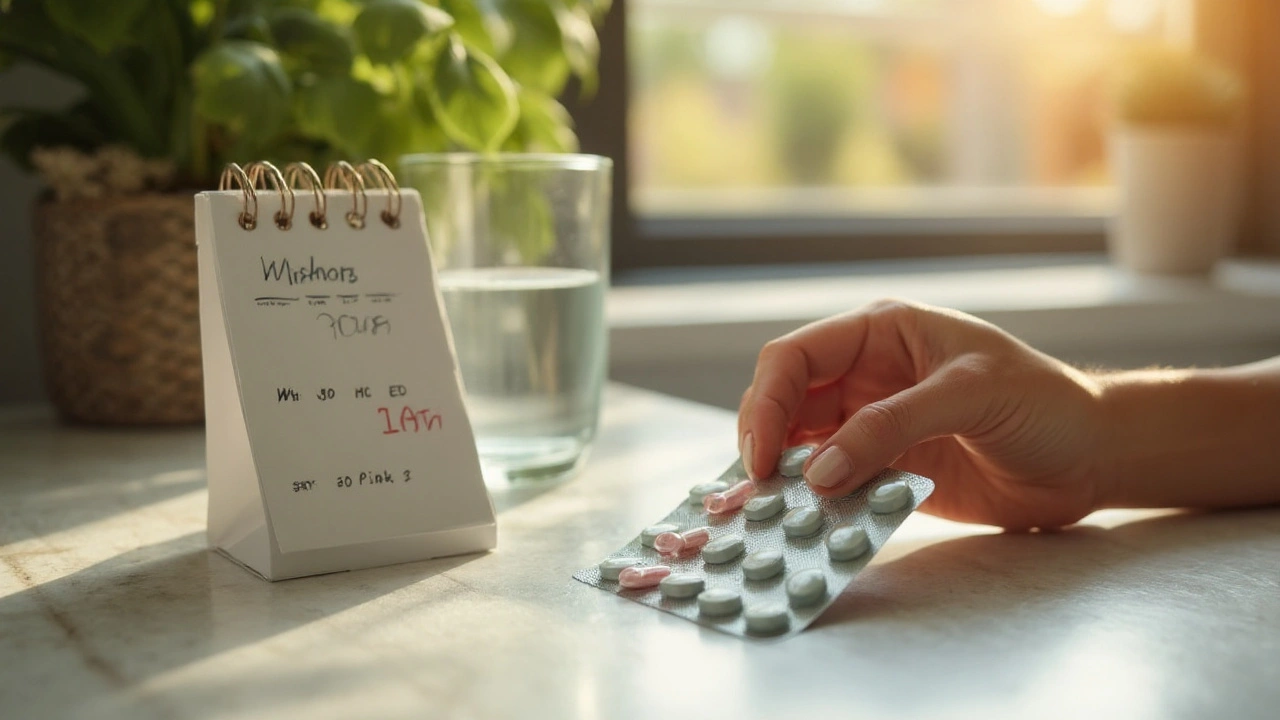TL;DR
- Hydrea is the brand name for hydroxyurea, a chemo drug used for sickle cell disease and some cancers.
- Typical adult dose ranges from 15mg/kg to 30mg/kg daily, adjusted based on blood counts.
- Common side effects include low blood cells, nausea, skin changes, and hair loss.
- Take Hydrea exactly as prescribed; never skip doses or stop abruptly without a doctor’s OK.
- Call your doctor if you develop fever, unusual bruising, or severe stomach pain.
What is Hydrea and How Does It Work?
Hydrea is the trade name for the drug hydroxyurea. It belongs to a class called antimetabolites, which means it interferes with the way cells make DNA. By blocking DNA synthesis, the drug slows the growth of rapidly dividing cells-like cancer cells or the abnormal red blood cells seen in sickle cell disease.
In sickle cell disease, Hydroxyurea boosts the production of fetal hemoglobin (HbF). Higher HbF levels make red blood cells less likely to sickle, reducing painful crises and the need for blood transfusions. In oncology, the drug is most often used for chronic myelogenous leukemia (CML), certain head‑and‑neck cancers, and melanoma. Its dual role makes Hydrea a unique medication that straddles both hematology and oncology.
Because it targets cell division, Hydrea doesn’t discriminate between “bad” cells and healthy ones that also divide quickly, such as bone‑marrow cells that produce blood cells. This is why regular blood‑count monitoring is a must.
The drug is taken orally, usually in tablet form, and can be taken with or without food. Some brands offer a liquid formulation for patients who have trouble swallowing pills.

Dosage Guidelines, Administration Tips & Common Side Effects
Dosage is highly individualized. Doctors start with a low dose and adjust based on blood‑test results and how the patient tolerates the medication. Below is a typical dosing framework for the two most common indications.
| Indication | Initial Dose | Typical Target Dose | Monitoring Frequency |
|---|---|---|---|
| Sickle Cell Disease | 15mg/kg once daily | 20-30mg/kg once daily (adjust to maintain HbF ↑ and blood counts safe) | Every 2-4 weeks until stable, then every 8-12 weeks |
| Chronic Myelogenous Leukemia (CML) | 300mg/m² once daily | Up to 2g per day, split in 2-3 doses if tolerability issues | Weekly CBC for first 2 months, then every 2-4 weeks |
Key administration tips:
- Take the same dose at the same time each day to keep blood levels steady.
- If you miss a dose, take it as soon as you remember-unless it’s almost time for the next dose. In that case, skip the missed one; don’t double up.
- Store tablets at room temperature, away from moisture and heat.
- Drink plenty of water with each dose to help the stomach tolerate the medication.
Because Hydrea suppresses bone‑marrow activity, the most common side effects are linked to low blood counts:
- Low white blood cells (neutropenia): Increased infection risk, fever, chills.
- Low platelets (thrombocytopenia): Easy bruising, nosebleeds, prolonged bleeding from cuts.
- Low red cells (anemia): Fatigue, shortness of breath, pale skin.
Other side effects you might notice include nausea, mild vomiting, loss of appetite, skin darkening (especially on the hands and face), and temporary hair thinning. Most of these are mild and improve as the body adjusts.
Serious, but rare, reactions can involve severe liver toxicity, lung inflammation (pneumonitis), or kidney problems. Prompt medical attention is crucial if you experience persistent abdominal pain, jaundice, or sudden swelling in the legs.

FAQs, Safety Precautions, and When to Call Your Doctor
Below are the questions patients most often ask after starting Hydrea. The answers aim to give you a clear picture of what to expect and how to stay safe.
- Can I become pregnant while taking Hydrea? Hydroxyurea is classified as a pregnancy‑category D drug. It can cause birth defects, so women of child‑bearing age must use effective contraception. If you plan to become pregnant, discuss alternatives with your doctor.
- Is it safe to drink alcohol? Small amounts of alcohol usually don’t interact directly with Hydrea, but both can irritate the stomach and depress bone‑marrow function. Limit intake and talk to your doctor if you notice increased nausea or fatigue.
- Do I need a special diet? No strict diet is required, but maintain a balanced intake of iron‑rich foods (especially if you’re anemic). Avoid raw or undercooked meats if you’re neutropenic to reduce infection risk.
- How often should I get blood work? Initially every 1-2 weeks, then every 4-8 weeks once stable. Your doctor will tailor the schedule based on how quickly your counts rebound.
- What should I do if I develop a fever? Treat it as a medical emergency. Fever can signal infection when white‑cell counts are low. Call your clinic right away, even if the fever is mild.
- Can I stop Hydrea on my own if I feel better? No. Stopping abruptly can cause a rebound of disease activity, especially in sickle cell patients. Any change in therapy must be approved by your physician.
**Safety checklist** before each dose:
- Check latest CBC results-make sure counts are within your doctor’s safe range.
- Confirm you’ve taken any prescribed supplements (folic acid is common with sickle cell patients).
- Review any new symptoms with your care team via a patient portal or phone call.
If you experience any of these red‑flag symptoms, contact your healthcare provider immediately:
- Fever ≥ 100.4°F (38°C) or chills.
- Unexplained bruising, nosebleeds, or gum bleeding.
- Severe nausea or vomiting lasting more than 24hours.
- Shortness of breath, chest pain, or new swelling in the legs.
- Yellowing of skin or eyes (possible liver issue).
Staying on top of labs, keeping open communication with your care team, and following the dosing schedule are the best ways to get the benefits of Hydrea while minimizing risks.






Craig Hoffman
21 September 2025 - 00:11 AM
Grab a weekly pill organizer and set a daily alarm on your phone so you never skip a Hydrea dose. Keep your lab results in the same note app and flag any drop in neutrophils. Staying consistent makes dose adjustments easier for your doc.
Samantha Leong
26 September 2025 - 19:04 PM
Missing a dose can feel unsettling, especially when you’re tracking blood counts closely. Make sure to log any new symptoms-fatigue, bruising, or fever-so your hematologist can tweak the regimen promptly. Consistency and communication are key to managing side effects effectively.
Taylor Van Wie
2 October 2025 - 13:57 PM
Don’t listen to anyone downplaying Hydrea; American oncologists have refined this drug for decades and it’s a cornerstone of our treatment arsenal. If you’re abroad and your doctor doubts the dosage, demand the US‑based protocol and get the proper monitoring schedule. No one should compromise on standards.
carlee Lee
8 October 2025 - 08:51 AM
Keep a water bottle handy; Hydrea likes it with plenty of fluids.
chuck thomas
14 October 2025 - 03:44 AM
Hydrea's mechanism involves inhibiting ribonucleotide reductase, which stalls DNA synthesis in rapidly dividing cells.
This effect is why it’s useful both in sickle cell disease-by raising fetal hemoglobin-and in certain malignancies.
The dosing starts low to gauge marrow tolerance and is titrated based on CBC trends.
In practice, many clinicians begin at 15 mg/kg daily for sickle cell patients and increase by 5 mg/kg increments every few weeks.
For chronic myeloid leukemia the starting point is often 300 mg/m², with adjustments guided by cytogenetic response.
Frequent labs in the first two months-sometimes weekly-help catch neutropenia before infections set in.
Once stability is achieved, the interval can be extended to every 4–8 weeks, but never beyond the physician’s comfort zone.
Patients should also be counseled to avoid raw or undercooked foods while neutrophil counts are low, as bacterial translocation can be life‑threatening.
Nausea is a common early complaint; taking the pill with a light snack and plenty of water often mitigates it.
Skin hyperpigmentation, especially on the face and hands, is benign and usually reverses after discontinuation.
Hair thinning is another reversible effect, so patients shouldn’t panic if they notice a few strands less.
Liver function tests should be obtained periodically because rare hepatotoxicity has been reported.
If a patient develops a fever above 38 °C, they must contact their care team immediately-time is of the essence.
Similarly, unexplained bruising or prolonged bleeding warrants urgent evaluation.
Pregnancy is contraindicated; effective contraception is mandatory for women of childbearing potential.
In summary, adherence, vigilant monitoring, and open communication make Hydrea a powerful tool rather than a risky gamble.
Gareth Pugh
19 October 2025 - 22:37 PM
Think of Hydrea as a double‑edged sword-sharp on the bad cells, dull on the good if you don’t stay sharp yourself.
Illiana Durbin
25 October 2025 - 17:31 PM
Very helpful guide.
Tyler Heafner
31 October 2025 - 11:24 AM
It is imperative to adhere strictly to the prescribed dosing schedule and to maintain regular hematologic assessments as outlined in the treatment protocol. Deviations may compromise therapeutic efficacy and increase the risk of adverse events. Patients should also be advised to report any febrile episodes or hemorrhagic signs without delay.
ADam Hargrave
6 November 2025 - 06:17 AM
Oh, absolutely, because everyone loves a good lecture on compliance-maybe next we’ll discuss the thrilling world of line‑drawing on lab reports.
Michael Daun
12 November 2025 - 01:11 AM
gotta keep an eye on that CBC, or else u’r in trouble.
Rohit Poroli
17 November 2025 - 20:04 PM
From a pharmacokinetic perspective, the area under the curve (AUC) for hydroxyurea correlates strongly with HbF induction, necessitating therapeutic drug monitoring to optimize the dose‑response relationship while mitigating myelosuppression.
Gene Nilsson
23 November 2025 - 14:57 PM
One must emphasize that neglecting the prescribed regimen constitutes a dereliction of personal responsibility and contravenes the ethical standards of patient stewardship. Such negligence is unacceptable.
Vintage Ireland
29 November 2025 - 09:51 AM
Totally get where you’re coming from-staying on top of labs can feel like a full‑time job, but it’s worth it for the peace of mind.
Anshul Gupta
5 December 2025 - 04:44 AM
Honestly, this whole guide is just regurgitated boilerplate; nobody reads this stuff.
Maryanne robinson
10 December 2025 - 23:37 PM
Wow, this guide really cracked open the whole Hydrea story in a way that even my grandma could follow! I love how it walks you through the dosing math without drowning you in crazy numbers. The side effect section is spot‑on, especially the reminder about keeping an eye on those pesky bruises. And the FAQ feels like a friendly chat with a knowledgeable pharmacist. Remember, folks, hydration is your best buddy when taking oral chemo-always have that water bottle within arm’s reach. If you ever feel a fever creeping up, don’t wait for the next appointment-call your clinic ASAP. Also, don’t forget to pop that folic acid supplement if your doctor prescribed one; it really helps the red blood cells bounce back. Keep sharing your experiences, because the community learns together and stays stronger.
Erika Ponce
16 December 2025 - 18:31 PM
Good points, thanks for sharing.
Danny de Zayas
22 December 2025 - 13:24 PM
Keep up the regular monitoring.
John Vallee
28 December 2025 - 08:17 AM
Ah, the saga of Hydrea is nothing short of an epic, a battle waged within our very marrow. Each dose is a calculated strike, a choreography of chemistry and courage. When the blood counts dip, it feels like the plot twist that tests the hero’s resolve. Yet, the triumph lies in the resurgence-those numbers climbing back, the phoenix rise of hemoglobin. So, dear comrades, let us not merely endure; let us celebrate each lab result as a stanza in our collective poem. Remember, the journey is as vital as the destination, and the camaraderie fuels the fire. Together, we script a narrative of perseverance and hope.